A GLYPTODON in Turin: The Argentinian Giant
Beschreibung
On Monday, 24 November 1851, the "Gazetta Piamontese, Giornale Ufficiale del Regno", published the report of Eugenio Sismonda (1815-1870) on the new gifts received at the Mineralogical Museum of Torino, the capital of the Kingdom of Sardinia-Piedmont. Sismonda, who devoted his research to fossil invertebrates, had been a professor of mineralogy at the local University since 1848. From the early 1840s, he had been in charge of the museum collections, directed by his brother, the geologist Angelo Sismonda (1807-1878), both active figures in Piedmont’s academic scene.
In that occasion, Eugenio Sismonda (1851) reported on a series of bones donated to the Turin Museum by the Savoyard Baron Henri Claude Louis Picolet d’Hermillon (1797-1864), former general consul in Buenos Aires (1835-1848) and, by then, general minister of the Kingdom of Sardinia at the Brazilian Court in Rio de Janeiro. The bones belonged to two fossil mammal genera endemic to the Americas, firstly MEGATHERIUM, established by the French anatomist Georges Cuvier in 1796, and secondly to a giant cingulate, presumably GLYPTODON, first described by the British anatomist Richard Owen in 1839.
The actors connected with the exhumation of the skeletons in Buenos Aires were the Genovese Nicola Descalzi (1801-1857) and the Neapolitan Pietro de Angelis (1784-1859). Since the 1820s they had both lived in Buenos Aires, where they tried to become providers of data, maps, artefacts, and museum specimens for European collectors and collections. Descalzi exhumed and arranged the bones of an extinct mammal that he called MULITA ELEFANTINA, the specimen that arrived in Turin in 1852. It was this specimen on which, in 1839, Richard Owen had created the new genus GLYPTODON after a sketch and a tooth sent from Buenos Aires.
Sismonda reflected the debates about the anatomy and mode of life of the South American Megafauna in the process of mounting the MEGATHERIUM skeleton, an arrangement that was later lost with the bombing of the museum during the Second World War. The carapace of GLYPTODON is today presented at the new location of the Museo Regionale di Scienze Naturali of Turin, being in fact the specimen whose tooth Owen received late in the 1830s.
In that occasion, Eugenio Sismonda (1851) reported on a series of bones donated to the Turin Museum by the Savoyard Baron Henri Claude Louis Picolet d’Hermillon (1797-1864), former general consul in Buenos Aires (1835-1848) and, by then, general minister of the Kingdom of Sardinia at the Brazilian Court in Rio de Janeiro. The bones belonged to two fossil mammal genera endemic to the Americas, firstly MEGATHERIUM, established by the French anatomist Georges Cuvier in 1796, and secondly to a giant cingulate, presumably GLYPTODON, first described by the British anatomist Richard Owen in 1839.
The actors connected with the exhumation of the skeletons in Buenos Aires were the Genovese Nicola Descalzi (1801-1857) and the Neapolitan Pietro de Angelis (1784-1859). Since the 1820s they had both lived in Buenos Aires, where they tried to become providers of data, maps, artefacts, and museum specimens for European collectors and collections. Descalzi exhumed and arranged the bones of an extinct mammal that he called MULITA ELEFANTINA, the specimen that arrived in Turin in 1852. It was this specimen on which, in 1839, Richard Owen had created the new genus GLYPTODON after a sketch and a tooth sent from Buenos Aires.
Sismonda reflected the debates about the anatomy and mode of life of the South American Megafauna in the process of mounting the MEGATHERIUM skeleton, an arrangement that was later lost with the bombing of the museum during the Second World War. The carapace of GLYPTODON is today presented at the new location of the Museo Regionale di Scienze Naturali of Turin, being in fact the specimen whose tooth Owen received late in the 1830s.
Kurzbeschreibung
The actors connected with the exhumation of the skeletons in Buenos Aires were the Genovese Nicola Descalzi (1801-1857) and the Neapolitan Pietro de Angelis (1784-1859). Since the 1820s they had both lived in Buenos Aires, where they tried to become providers of data, maps, artefacts, and museum specimens for European collectors and collections. Descalzi exhumed and arranged the bones of an extinct mammal that he called MULITA ELEFANTINA, the specimen that arrived in Turin in 1852 and on which, in 1839, Richard Owen had created the new genus GLYPTODON after a sketch and a tooth sent from Buenos Aires.
Institution
Typ
GLYPTODON sp.
Thema
megafauna, history of taxonomy, anatomy of fossils, 18th century, Turin
Beteiligte Personen und Organisationen
Found and mounted by Nicola Descalzi (1801-1857) in the Rio Matanza, near Buenos Aires, in 1838. Descalizi presented the skeletons to the Kingdom of Piedmont. It is recorded in the "Catalogue of Gifts" of the Museum of Torino, under the name 'Picollet d'Hermillon', 1851.
Zeit
1838
Ort
Origin: Matanza river, Buenos Aires, Argentina
Maße/Umfang
750 x 140 x 850 mm
Förderung
Project: SciCoMove - Scientific Collections on the Move: Provincial Museums, Archives and Collecting Practices (1800-1950).
Funding: This project has received funding from the European Union’s Horizon 2020 research and innovation programme under the Marie Skłodowska-Curie grant agreement No 101007579.
The contents of this publication are the sole responsibility of the SciCoMove consortium and do not necessarily reflect the opinion of the European Union.
Funding: This project has received funding from the European Union’s Horizon 2020 research and innovation programme under the Marie Skłodowska-Curie grant agreement No 101007579.
The contents of this publication are the sole responsibility of the SciCoMove consortium and do not necessarily reflect the opinion of the European Union.
Dateien
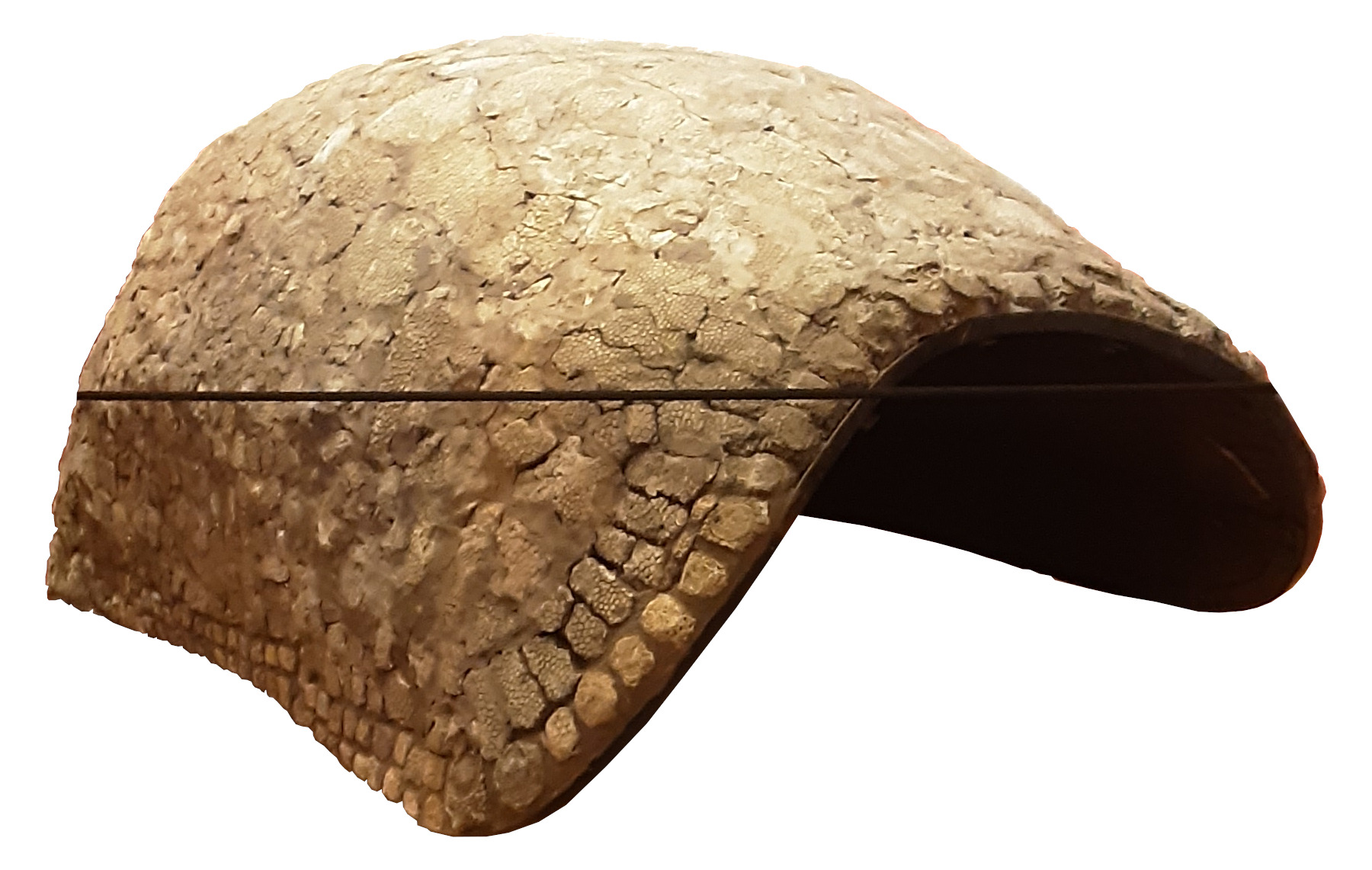
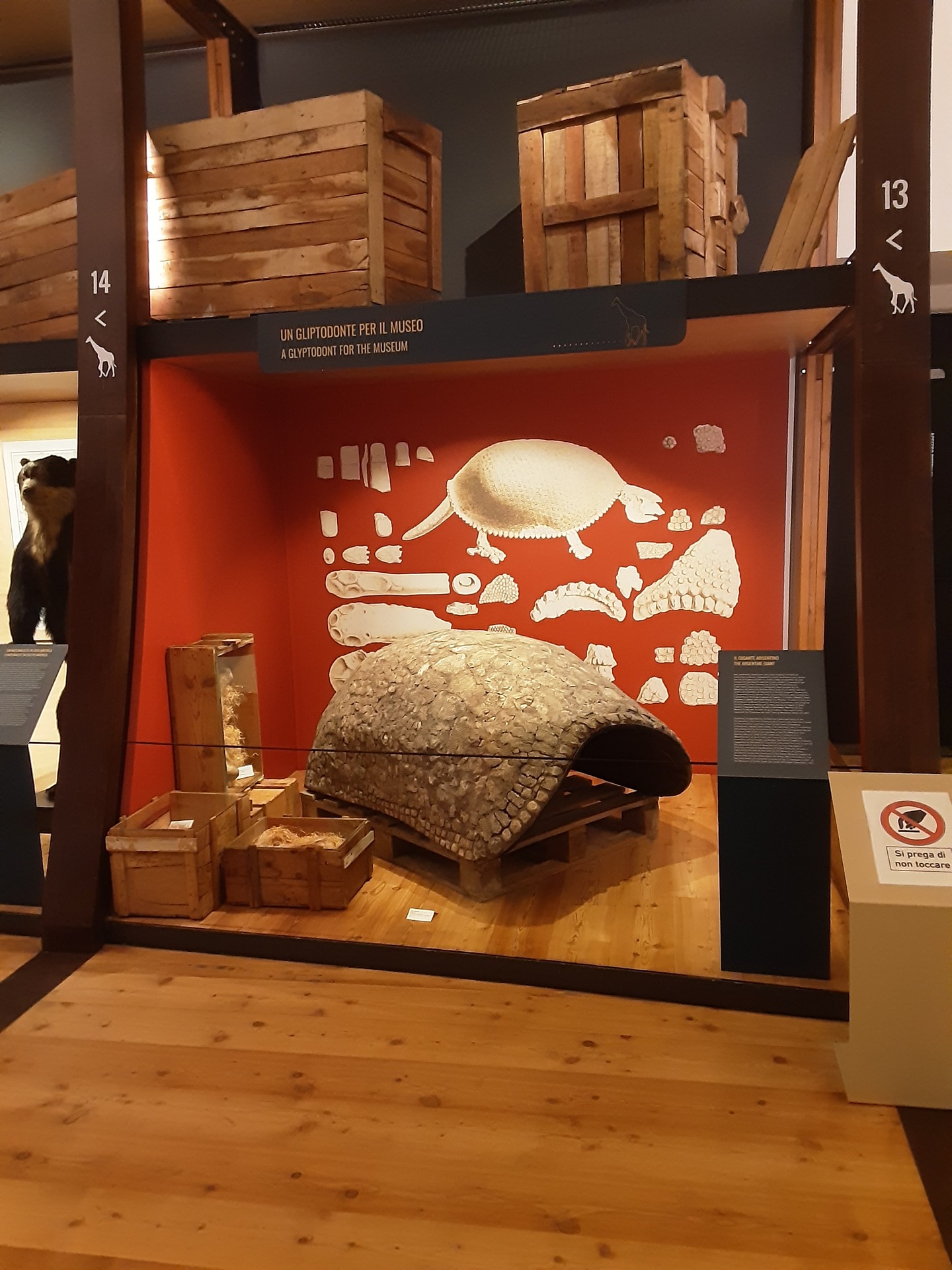
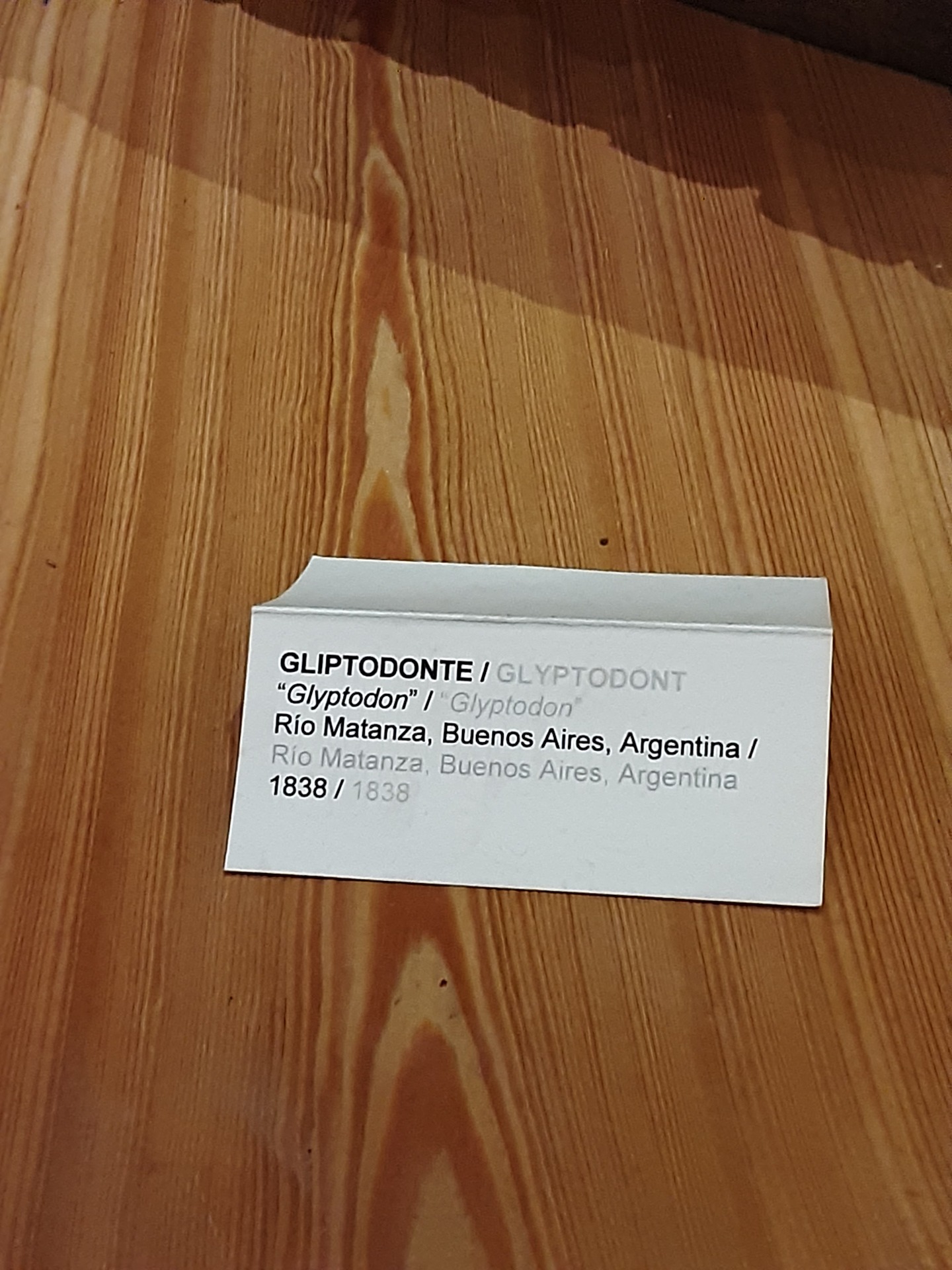
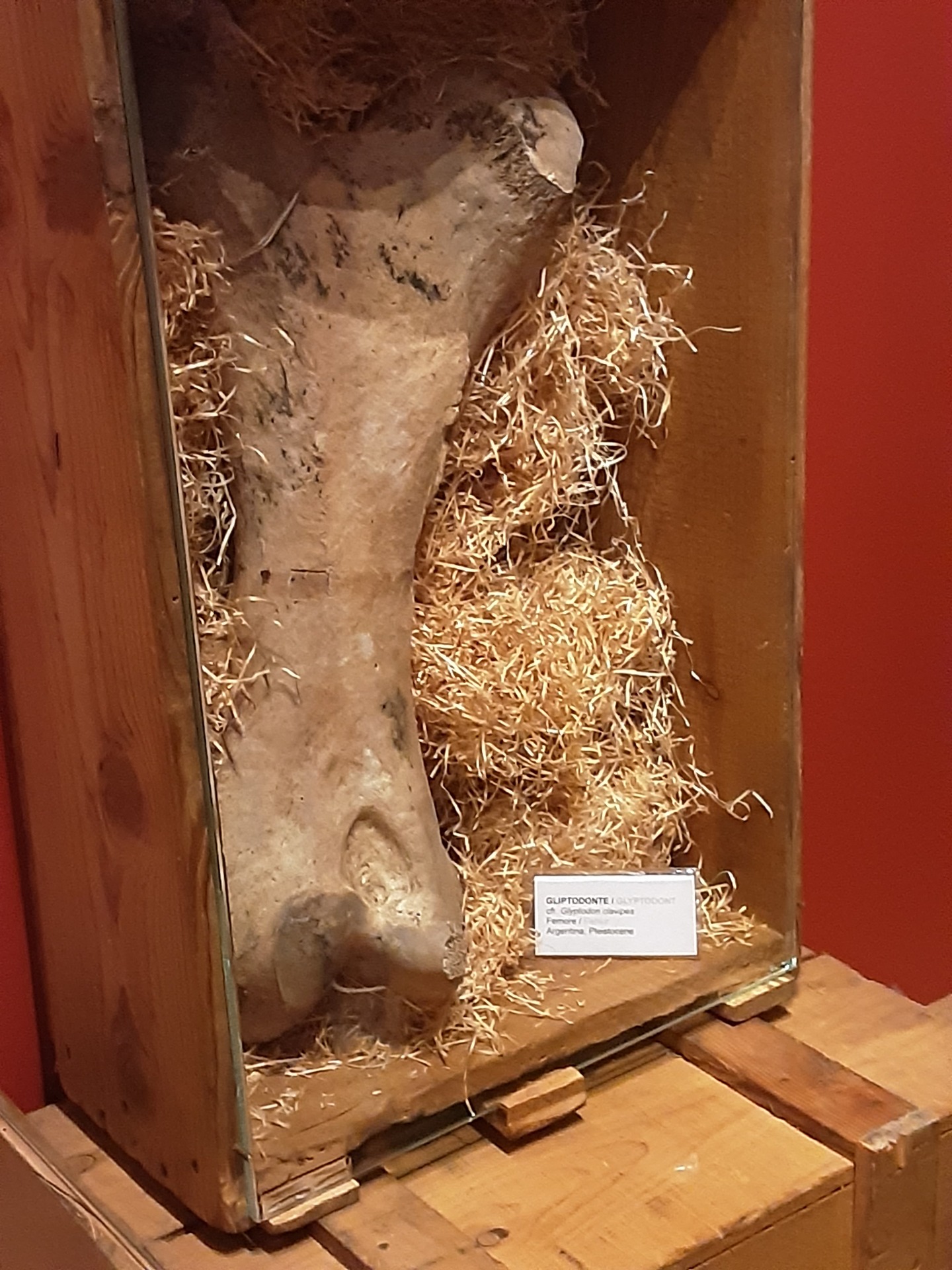
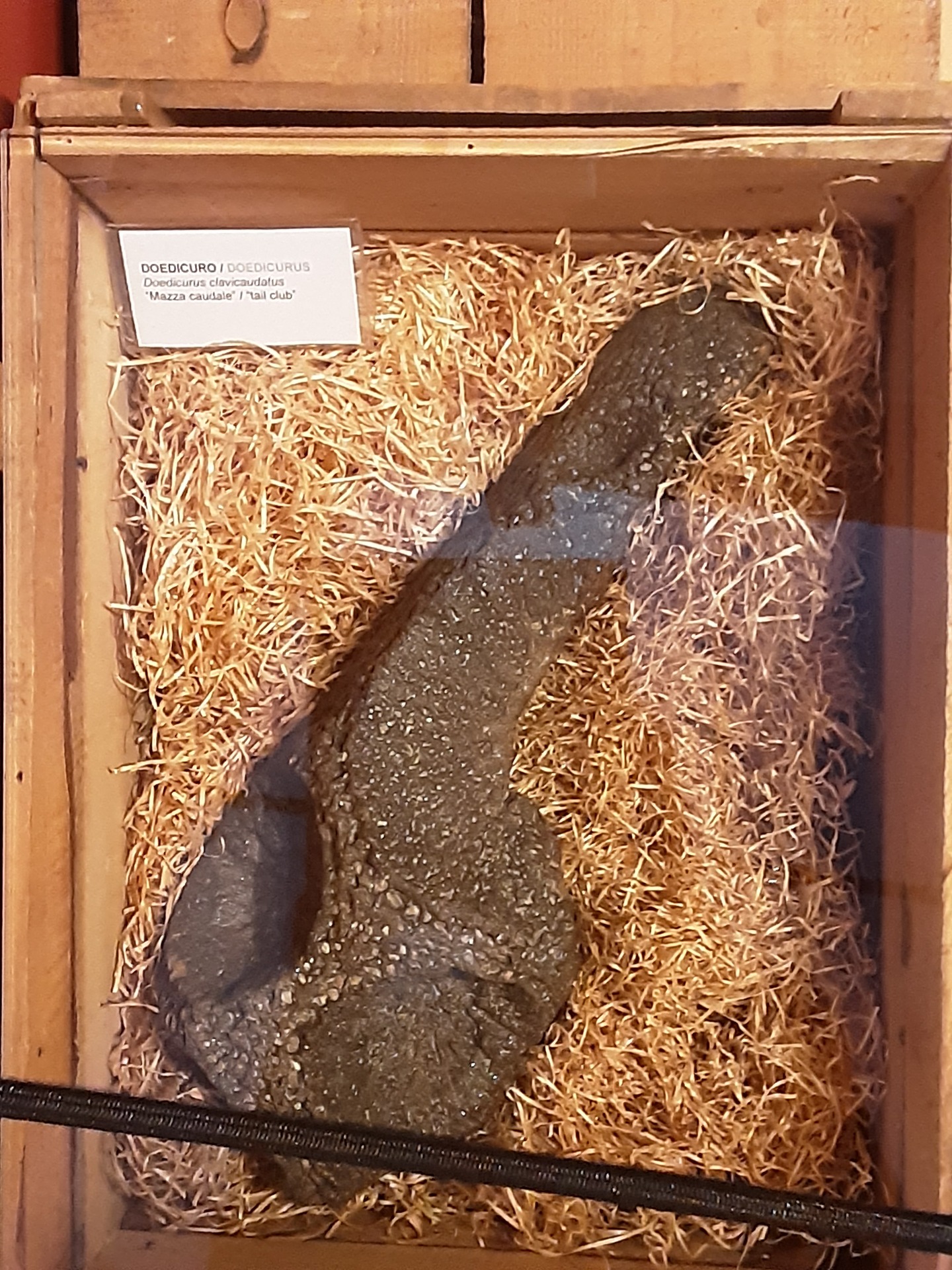
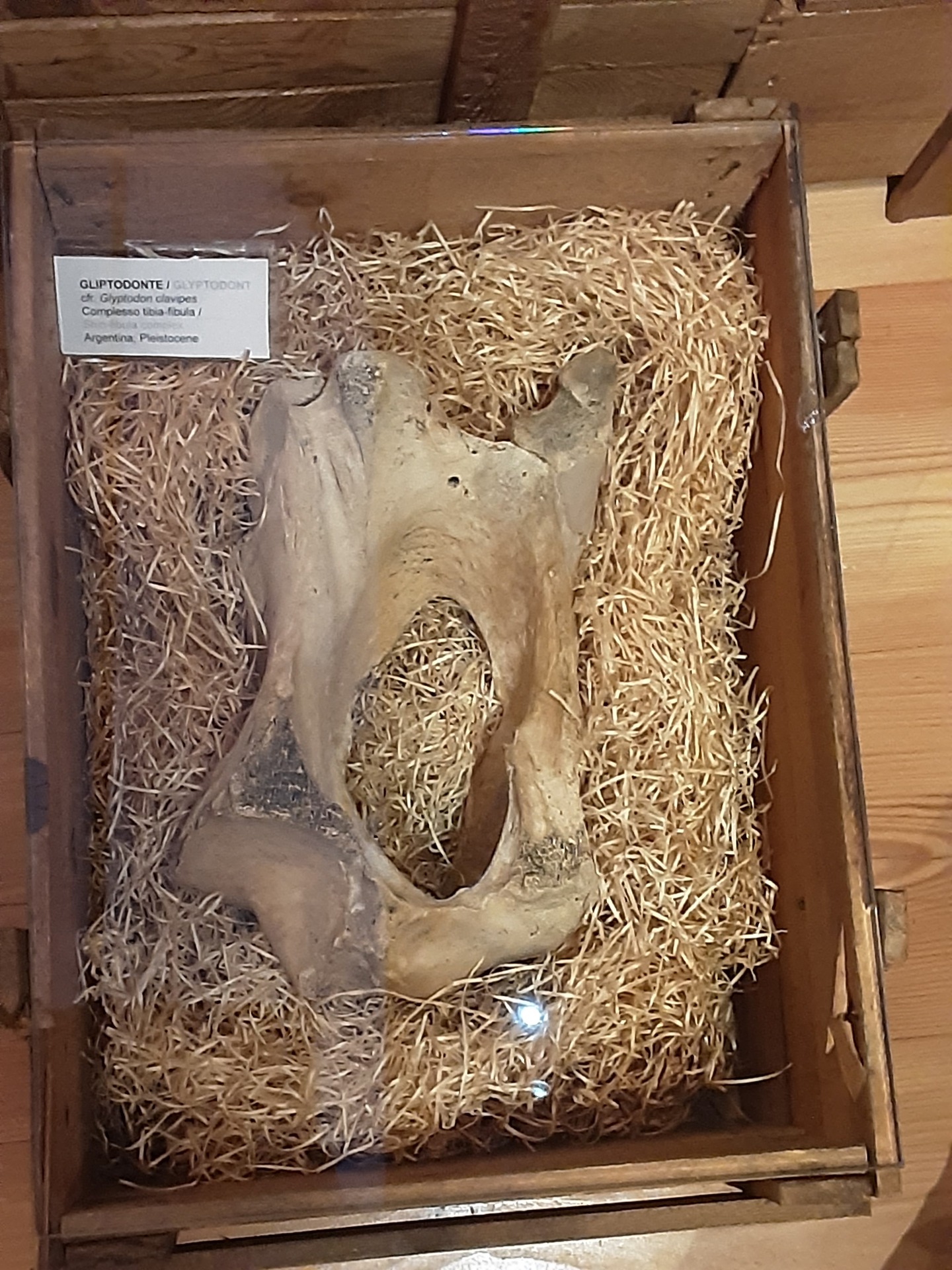
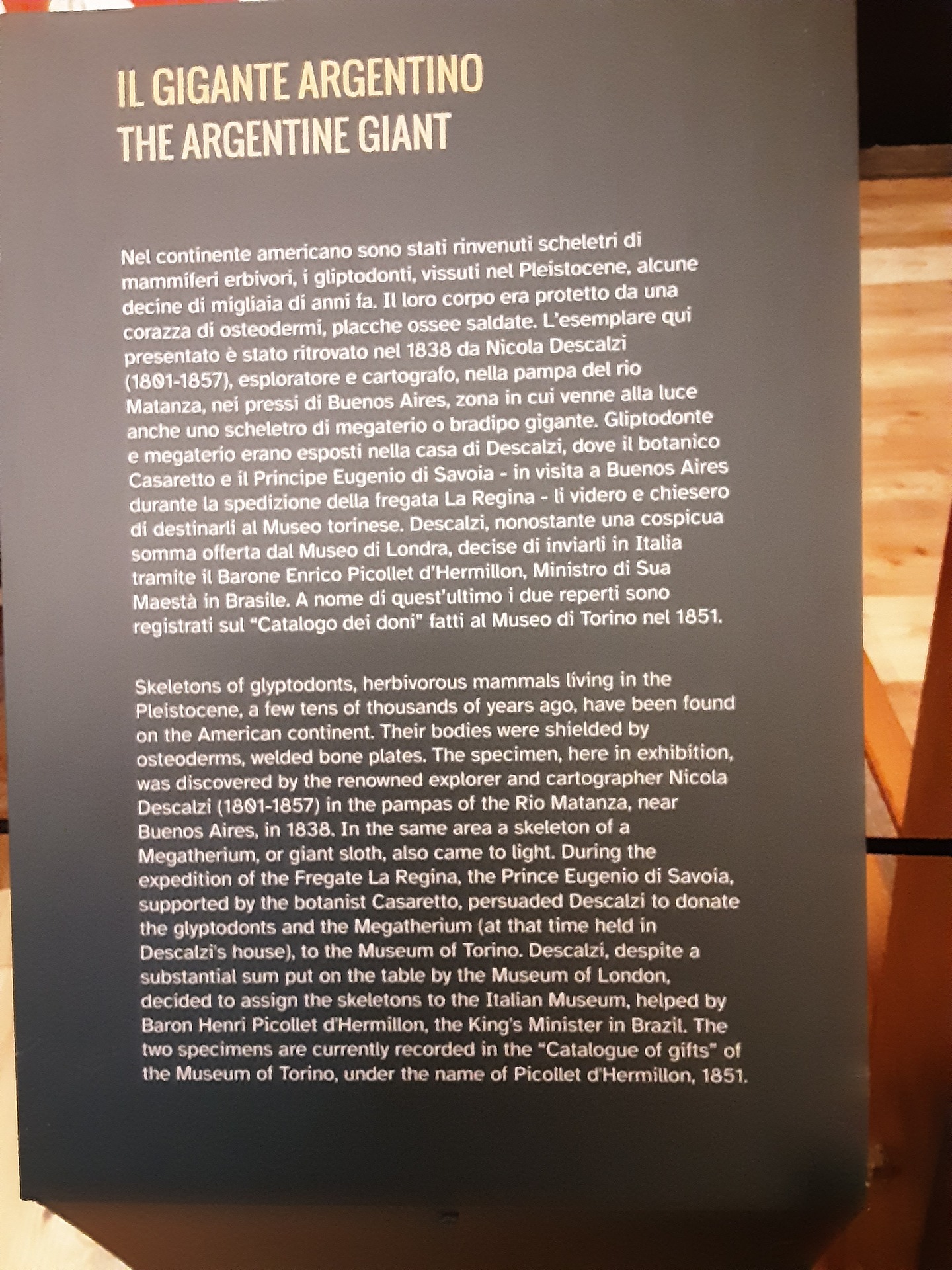
Quellenangabe
„A GLYPTODON in Turin: The Argentinian Giant,” SciCoMove, zuletzt aufgerufen am 1. Juli 2025, https://ausstellungen.deutsche-digitale-bibliothek.de/scicomove/items/show/2.
